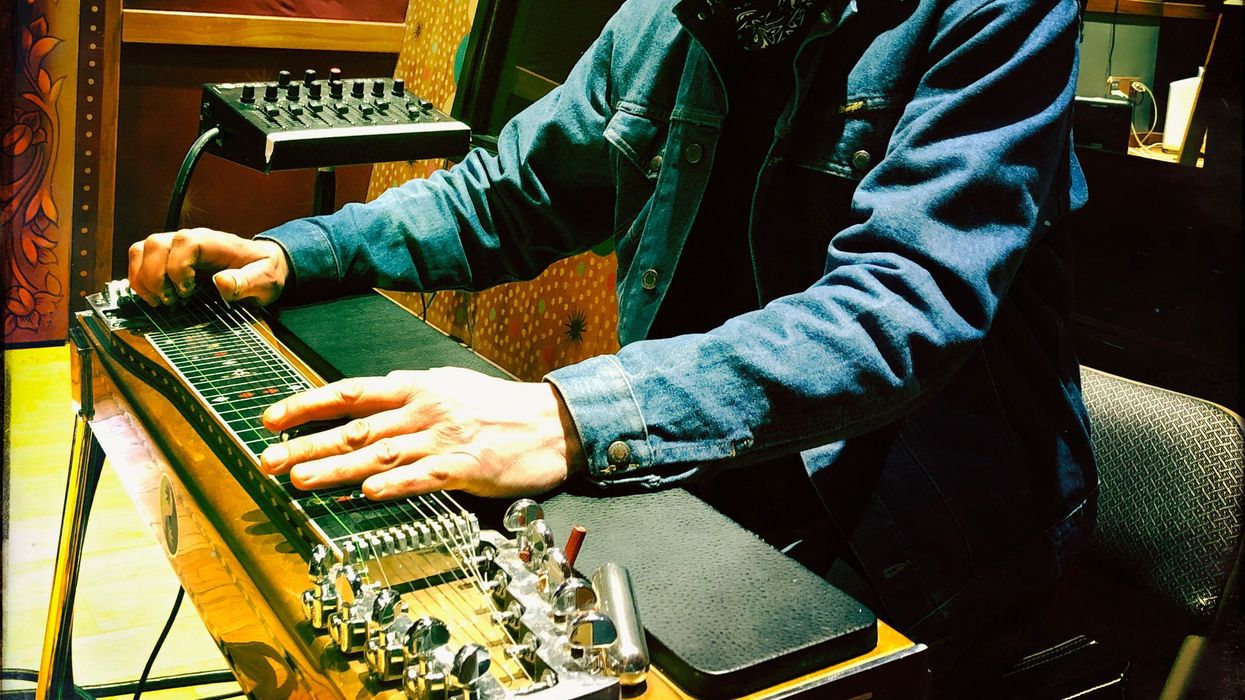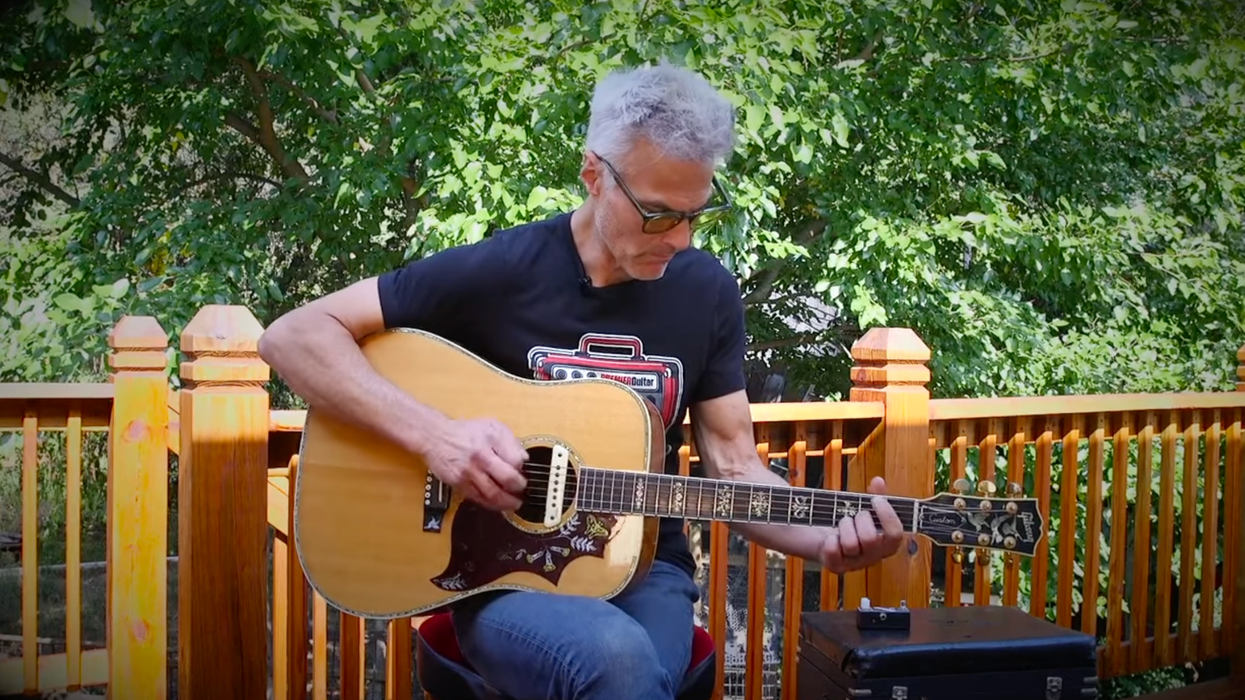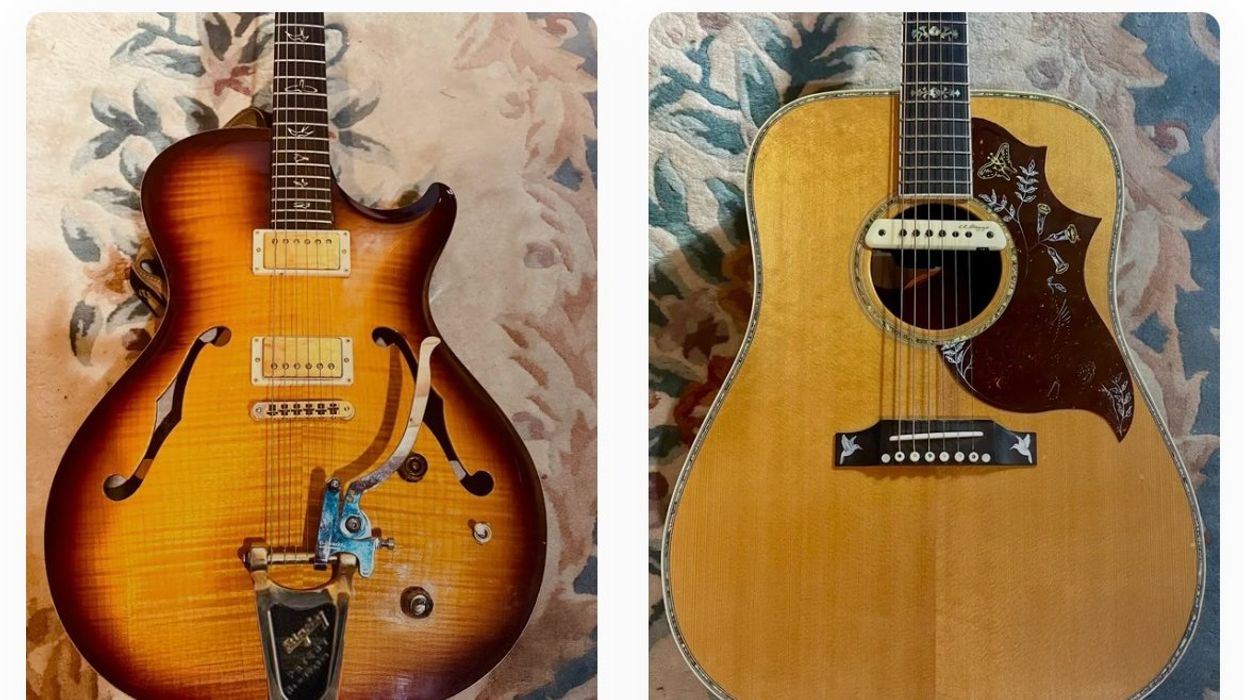“Ask yourself whether you are happy and you cease to be so.”—John Stuart Mill
My heroes have always been musicians. After a lifetime of gigs and a decade of Rig Rundowns, I’ve been lucky enough to meet a lot of musicians that I have loved, emulated, followed, stalked. For the most part, they are nothing like the demigods I imagined. If you get an unguarded glimpse into who they are, often you will recognize a kinship, for we share this same fragile, nervous, socially awkward, somewhat insecure core. Distill it all down without smoke and mirrors, or smoke and beers, and you can see that like most of us, they were drawn to music from an early age because it gave them something they needed.
Maybe music is the words they can’t say, or the feelings they can’t express, or emotions they need to get out, or a chi-aligning meditation that centers them, or gives them the recognition they crave. Most teenagers like music, but for those who go on to become full-on musicians, it goes way beyond liking music, or even loving it—it’s a necessity. Perhaps, for some who don’t feel at home in the world, they retreat into music. I suspect that most of us spend all those hours alone with our instrument because it’s our therapy.
Research has found that musicians are three times more likely to experience anxiety or depression than the general public. And odds are, if you are reading this gear-nerd mag, you are probably a musician. So yes, I’m talking to you, gentle reader, because you (like me) are wired differently than the so-called “normals.”
Why am I bringing up this cheering fact? Because this is PG’s acoustic issue, May is Mental Health Awareness Month, and it just so happens that my personal mental-health panacea is playing acoustic guitar, preferably outside. Here’s why it works for me.
Most teenagers like music, but for those who go on to become full-on musicians, it goes way beyondliking music, or even loving it—it’s a necessity.
Often, I find myself lying in bed in the middle of the night, obsessively dwelling on problems that have no solution, my mind busily polishing every horrible detail. If I continue lying there, these negative thought loops will accompany me until the sun rises, and then through the following miserable day.
Playing electric guitar works, too, but not as well, because it’s too easy to get bogged down in gear with an electric. What I love about acoustic is the immediacy of it. It’s right there, the sound literally comes out of your fingers and the wood, and presses against your body to resonate. There are no cables to chase down, amps to fiddle with, pedals to think about; it’s just making music. Best of all, acoustics are highly portable, so you can take it outside. Provided the weather is not horrible, outside is where you want to be.
I suspect we are living in the least mental-health-friendly age ever, with the average American spending 7 hours per day staring at a screen that feeds us a constant diet of anger, desire, and fear. You are what you eat, and that dystopian diet has a cost. Combine that with the fact that for the roughly 2 million years that Homo genus has been walking the Earth, we’ve been grounded to earth the entire time until now, and that too has a cost. Research suggests that reconnection with the Earth’s natural electric charge stabilizes our physiology at the deepest levels; reduces inflammation, pain, and stress; improves blood flow, energy, and sleep; and generates greater well-being. If you happen to drive by my home at 4 a.m. and it’s not freezing outside, there’s a good chance you will see me sitting cross-legged on my lawn playing guitar alone in the dark.
My main acoustic is my Epiphone Lil Tex. The strings are so old on it, you may need a tetanus shot after playing it. Although Tex does not have a great tone, it feels like part of my body; we have seriously bonded from all the hours we’ve spent together outside, sitting with my toes in the grass and connecting to the universe. Twenty minutes outside playing that thing always makes me feel like what I imagine an advanced yogi must feel like after a deep meditation.
So, when this world is just too much, grab your acoustic and go outside and play with your toes in the grass or sand. Get lost in the music and I promise you will feel better. And if you or someone you know is struggling with mental health issues, there is help—samhsa.gov is a great resource.







![Devon Eisenbarger [Katy Perry] Rig Rundown](https://www.premierguitar.com/media-library/youtube.jpg?id=61774583&width=1245&height=700&quality=70&coordinates=0%2C0%2C0%2C0)








